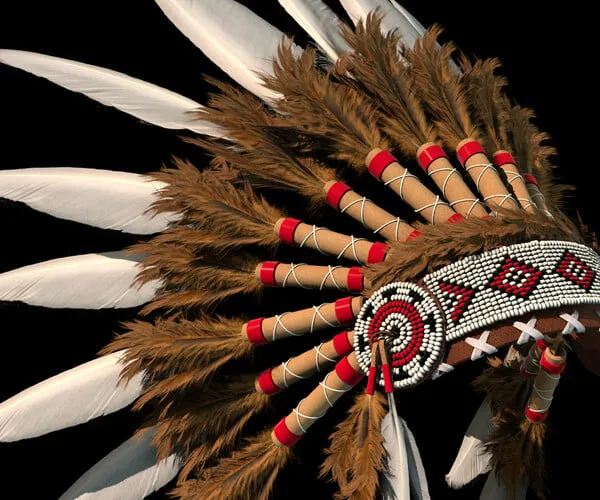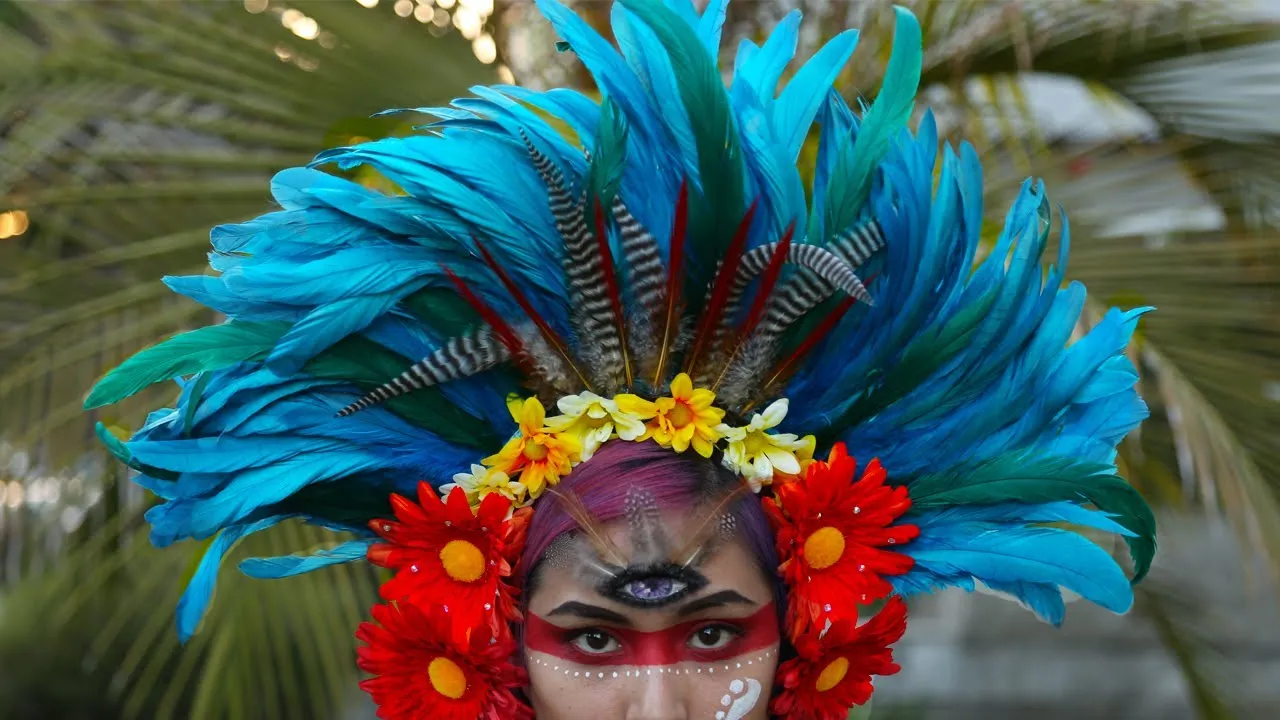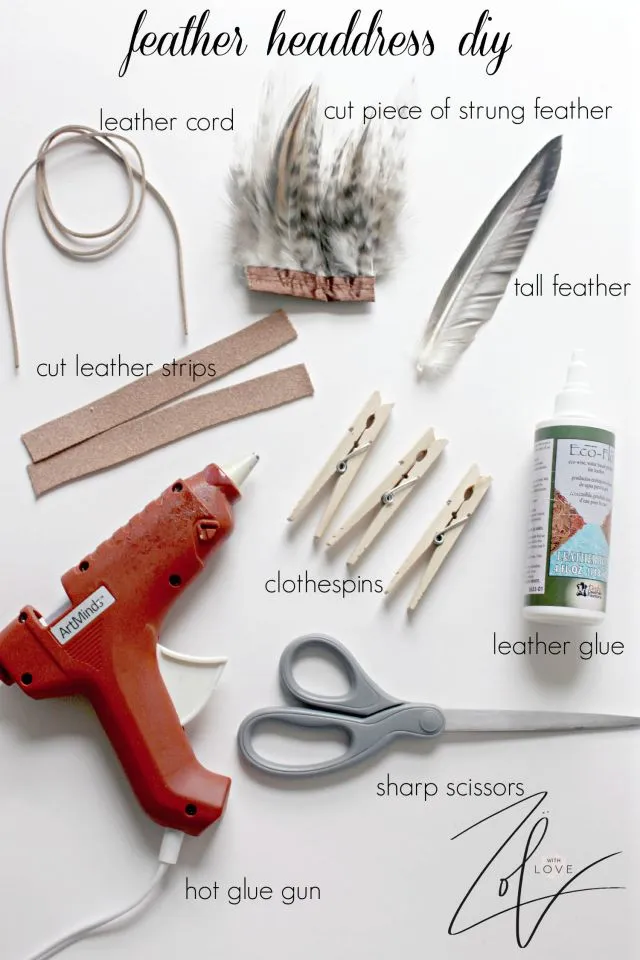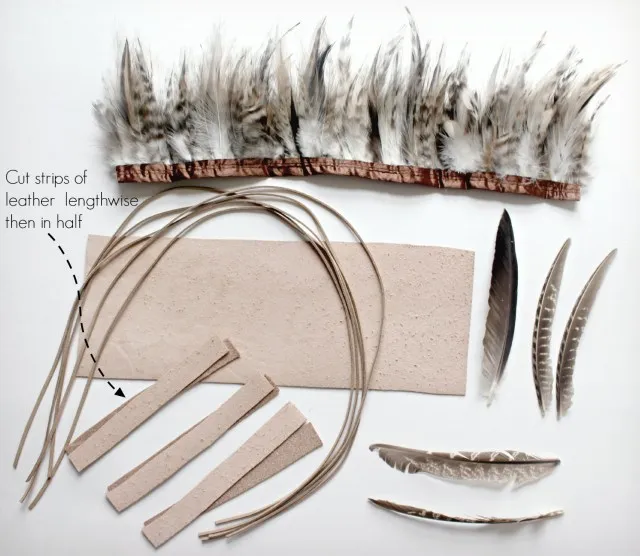Blog
How To Make A Native American Headdress?
How To Make A Native American Headdress? In this guide, we delve into the intricate process of creating a Native American headdress, a symbol deeply rooted in indigenous culture. This artistic endeavor is a heartfelt tribute to the traditions, history, and enduring spirit of Native American tribes.
Native American Clothes explore the craftsmanship behind this iconic symbol, emphasizing the importance of respecting and authentically representing these diverse cultures.
How to make a Native American headband?

When we conjure an image of a Native American, it often involves a formidable figure adorned in a feathered headdress, commonly referred to as a warbonnet. This iconic depiction has been etched into the collective consciousness through countless movies, television shows, and non-native artworks.
However, it’s time to set the record straight: the belief that all, or even most, Native Americans wore these elaborate warbonnets is a misconception.
In reality, the elaborate, full-feathered warbonnet headdress was not a common sight across all tribes. While it certainly held significance for a few, many tribal nations had their own distinct styles of headgear, each deeply rooted in their unique customs and beliefs.
These headpieces served a multitude of purposes, ranging from ceremonial significance to practical protection against the elements. Moreover, they were used to convey one’s status within the tribe and to intimidate foes in times of battle.
Let’s delve into the rich tapestry of Native American headdresses, exploring their diverse forms and the tribes that proudly adorned them. It’s crucial to emphasize that these headdresses are sacred to their respective tribes, and it’s imperative to respect and refrain from appropriating them.

(It’s worth noting that headbands, unlike many headdresses, lack the same level of sacred symbolism and cultural tradition.)
Roach Headdress: A Common Thread
One of the most prevalent types of headdress among North American Native Americans is the roach headdress. Crafted from stiff porcupine hair, deer tail hair, turkey beard hair, or moose hair, these headdresses feature dyed feathers attached to a leather or bone base, creating a distinctive crest-like shape. They often boasted embellishments like shells, feathers, or other ornaments, adding to their visual appeal.
The roach headdress found favor among various tribes, including the Pawnee, Mohawk, Mohican, Osage, Pequot, Fox, Huron, and Sauk Indians. Remarkably versatile, roaches were worn by both warriors heading into battle and dancers performing ceremonial dances. For young boys, earning the privilege to wear a roach headdress marked a significant milestone in their tribal journey.
How do you make a feather headdress?

Materials Needed:
- Feathers: Collect or purchase feathers, making sure they are legal and ethically sourced. Many headdresses traditionally use eagle feathers, but you can also use other types of feathers like turkey or goose.
- Leather or Fabric: You’ll need a sturdy base for the headdress. Leather is a common choice, but you can also use felt or another fabric.
- Thread and Needle: To attach the feathers securely to the base.
- Beads, Shells, or Ornaments: Depending on the style and cultural significance, you may want to add decorative elements.
- Scissors: For cutting and trimming materials.
Steps:
- Design: Plan the design of your headdress. Consider the arrangement and colors of the feathers and any decorative elements.
- Prepare the Base: Cut your leather or fabric into a strip that will fit around your head comfortably. Make sure it’s wide enough to attach the feathers.
- Feather Preparation: Trim the quills of the feathers to a uniform length if needed. This will make it easier to attach them to the base.
- Attach Feathers: Starting at the bottom of the headdress, sew or glue the feathers onto the base. Be sure to secure them tightly to prevent them from falling off. You can arrange them in rows or layers, depending on your design.
- Decorate: If you want to add beads, shells, or other ornaments, do so after attaching the feathers. These can be sewn or glued onto the base.
- Finishing Touches: Once you’ve attached all the feathers and decorations, make sure everything is secure. Trim any excess fabric or leather from the base.
- Fitting: Try on the headdress to ensure it fits comfortably on your head. You may need to add ties or straps to secure it in place.
- Respect Cultural Significance: If you’re creating a headdress inspired by a particular culture, research and respect the cultural significance of the design and materials used. Avoid appropriating or misrepresenting indigenous cultures.
Remember that feather headdresses can hold deep cultural and spiritual significance for many indigenous peoples. It’s essential to approach the creation and wearing of such headdresses with respect and cultural sensitivity. If you’re unsure about the cultural context or appropriateness, it’s best to consult with individuals from the culture or community you’re drawing inspiration from.
How To Make A Native American Headdress?
Materials You Will Need:
- Feathers: Gather a selection of feathers, preferably from birds like eagles, hawks, or turkeys, as these are commonly used in traditional headdresses. Remember that using feathers from protected species may be illegal.
- Leather or Felt: You’ll need a strip of leather or felt that can comfortably fit around your head. This will serve as the base for attaching the feathers.
- Beads and Decorative Items: Many headdresses feature intricate beadwork and decorative elements. Acquire beads, shells, and other items as needed for embellishments.
- Thread and Needle: High-quality thread and a sturdy needle are essential for securing feathers and attaching decorations.
Steps to Make a Native American Headdress:
- Prepare the Base: Cut a strip of leather or felt that fits comfortably around your head. Ensure it’s long enough to accommodate the feathers you plan to attach.
- Select and Prepare Feathers: Choose your feathers, considering their size and colors. Traditionally, larger feathers are placed at the top, while smaller ones are layered below. Trim the quills of the feathers to create a flat surface for attachment.
- Attach the Feathers: Starting at the base of the strip, use your needle and thread to sew the quill end of each feather onto the leather or felt strip. Layer them, with larger feathers at the top and smaller ones below. Be sure to space them evenly and maintain a balanced appearance.
- Add Decorations: If your design includes beadwork, shells, or other decorative elements, attach them using the same thread and needle. This is where you can get creative and incorporate traditional patterns or personal symbolism.
- Secure the Ends: Once you’ve attached all the feathers and decorations, make sure the ends of the strip overlap enough to fit securely around your head. Sew or glue the ends together, ensuring a snug fit.
- Finishing Touches: Trim any excess leather or felt and ensure that all attachments are secure. You may want to add a leather tie or fastening mechanism to keep the headdress in place.
- Respect and Cultural Awareness: Remember that headdresses hold deep cultural and spiritual significance for many Native American tribes. If you plan to wear or display your creation, it’s essential to educate yourself about the cultural context and meaning behind headdresses, as well as the specific traditions of the tribe you’re drawing inspiration from. Always approach this craft with the utmost respect and humility.

How do you make a feather headdress?
Keep in mind that crafting a Native American headdress should be done with cultural sensitivity and an understanding of the significance these items hold for indigenous peoples. It’s also important to note that not all tribes have headdresses as part of their traditional regalia, so researching the specific cultural practices of a tribe is crucial before attempting to create or wear one.
See more: List Of Native American Owned Clothing Brands
